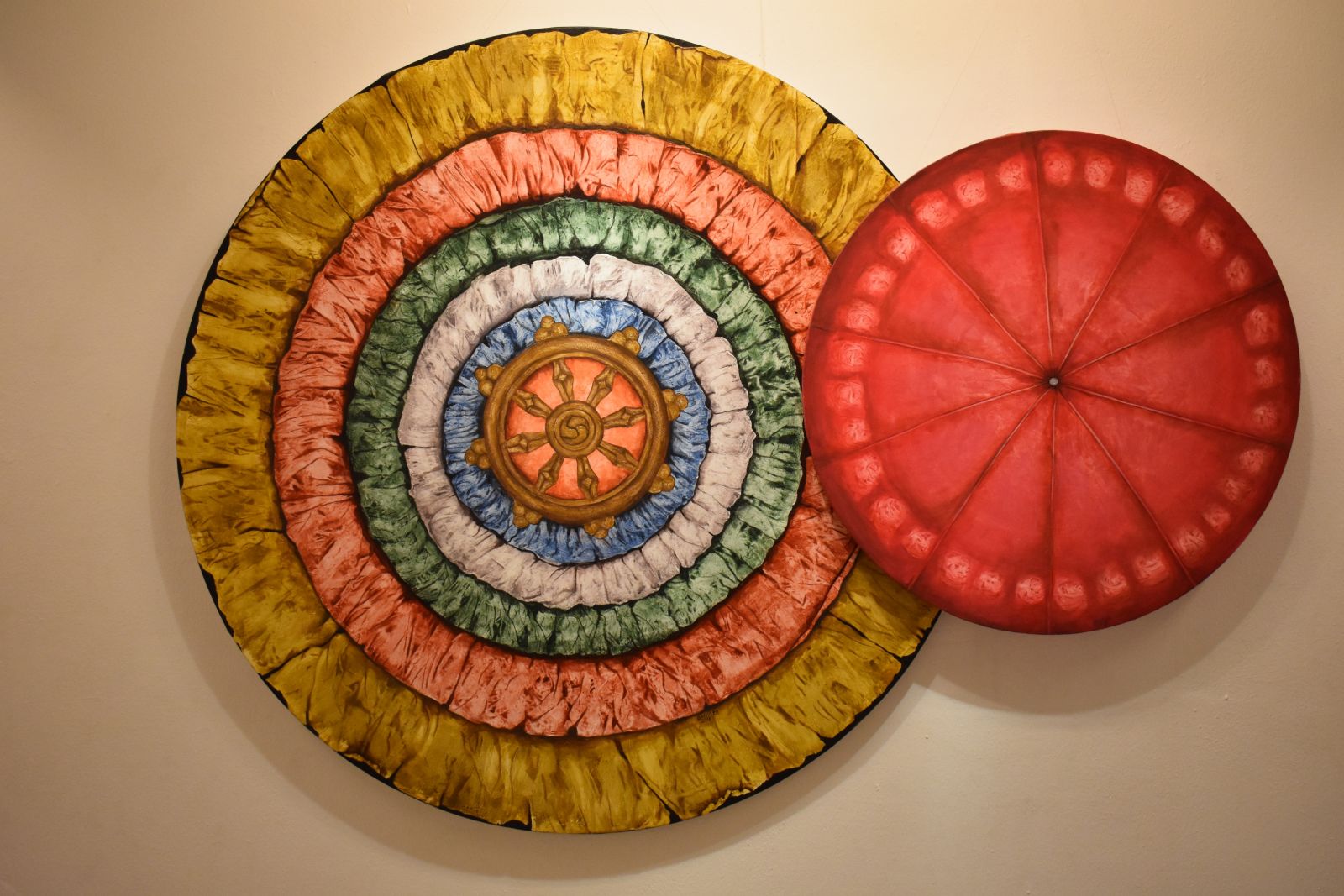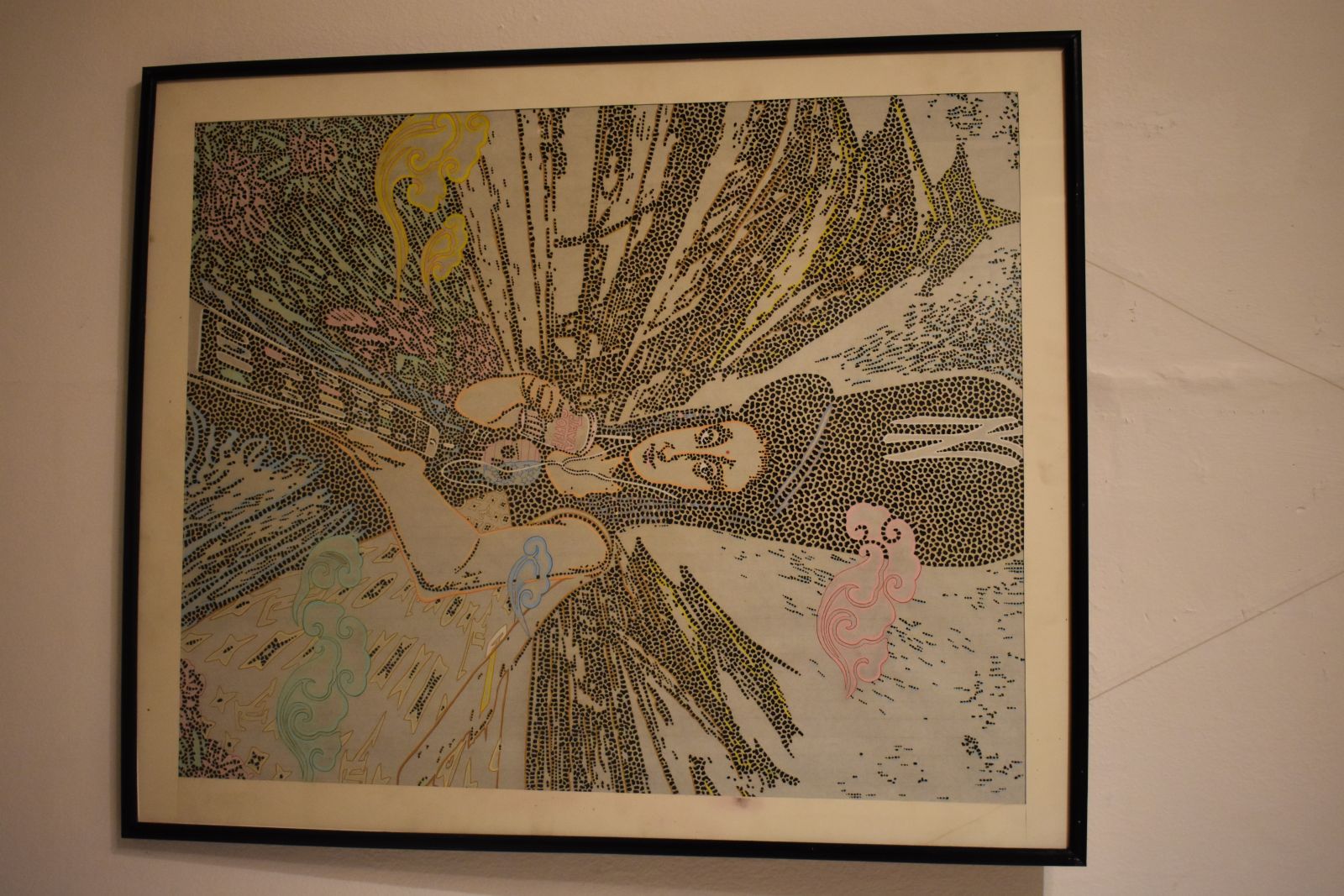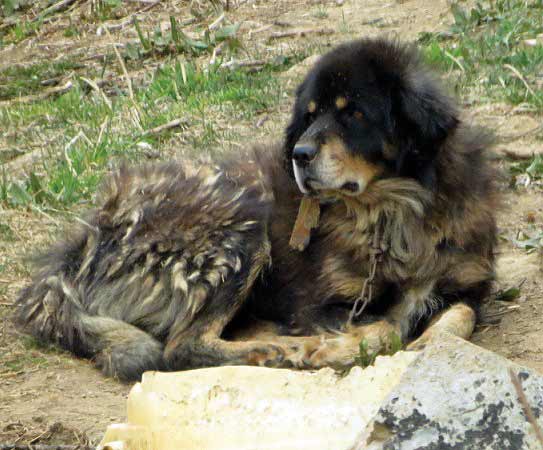Speaking of art exhibits, I recently attended some excellent ones, featuring four superbly talented Artists.One was was held at Siddhartha Gallery, running from September 30 to November 2, 2018, and Featured artwork by Bidhata KC and Manish Lal Shrestha, both winners of the Australian Himalayan Foundation Art Award, a highly successful program that supports young artists in the Himalayan Region.
Bidhata’s art is as always, bright and insightful; this is the second exhibit of hers I’ve attended so far This year, and I’m stuck as always by the vibrancy of her work and her constant enthusiasm for art—Both her own and that of others.
This collection of her work, titled,Shifting Values – Expectations vs Reality, was inspired by an Incongruous umbrella spotted at a festival she attended in Upper Mustang in 2014. Instead of the Traditionally decorated cloth umbrella she’d expected to be protecting the Mustang monarch from the Sun, it was just a garish, commercial one of the kind you might expect to see in Kathmandu, or Anywhere else in the world.
Building on that, her work displays traditional Mustang buildings and scenes, along with some from the Valley, juxtaposed with the modern equivalent, slowly but steadily making inroads
Downstairs were drawings and also an art installation by Manish Lal Shrestha. Made in the time Following the death of his mother, these pieces were both poignant and insightful. Interestingly, just a Week or so later, I attended his small solo exhibit at Dalai-la’s new art space in Thamel that’s been Giving space to a different artist each month. Those paintings—many of exuberantly colored bells—Had a completely different feel to them, which just underscored for me Manish’s talent and ability to Conjure emotion.
This exhibit, however, shone a small spotlight on the traditions and expectations society puts on the Recently bereaved, and the many rites they must perform. Ten were portraits in pen and ink, and the Installation was 108 small pillows hanging in rows, linked to the softness of a mother’s lap, each Showing an image of the upper part of a head, a button punched through it. Thought-provoking and Touching.
A few weeks later, I was at Siddhartha Gallery again, for another joint exhibit being inaugurated by Lisa Choegyal, the honorary consul from New Zealand: Levitation and Changing Line. This was an Exhibit by David Douglas and TulkuJamyang, running from November 13-29, 2018.
It was one of those great combinations where the work of two artists, while on the surface different in Multiple way when displayed together, effectively complemented each other and formed a full, whole Picture for the attendee.
.JPG)
At the time, though, I knew none of this; I was simply swept away by the powerful paintings. The Collection, titled Levitation, featured various monks meditating, and not quite touching the ground as They did so. I am still taken with one image I saw that day, of a Korean nun in profile, hands joined, Head bowed, feet not quite there. It was both powerful and ephemeral and captured that mystic Spirituality that levitation implies.
While the subject downstairs was monks, upstairs, the other half of the exhibit (Changing Line), was in Fact, created by an actual monk, TulkuJamyangGyatso. A Nepali of Tibetan origin, he also has an artist Father from whom he learned the art of thangka painting. While this is his first exhibition in Nepal, his Work is already found on walls of museums worldwide.
His art is, quite simply, something completely different: the images are made up of holes burned into Rice paper with incense sticks. From a distance, you just see the complete picture, and it’s only when You get up close, real close, that you realize that it’s all made up of tiny, tiny holes.
The themes of his works vary, and often gently poke fun at Nepal’s accelerated globalization, or in the Case of my favorite, Splash (7 Sloths), is a perhaps tongue-in-cheek look at Nepal’s new federal rule; The topi-clad sloths are something I could look at all day.












